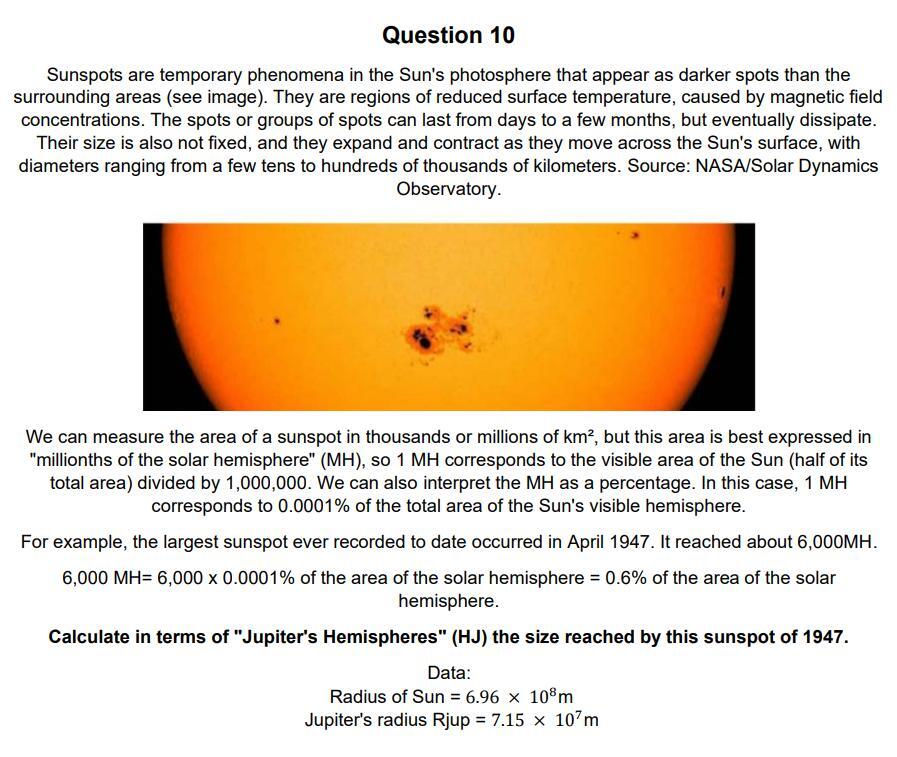Answered step by step
Verified Expert Solution
Question
1 Approved Answer
Question 10 Sunspots are temporary phenomena in the Sun's photosphere that appear as darker spots than the surrounding areas (see image). They are regions of

Step by Step Solution
There are 3 Steps involved in it
Step: 1

Get Instant Access to Expert-Tailored Solutions
See step-by-step solutions with expert insights and AI powered tools for academic success
Step: 2

Step: 3

Ace Your Homework with AI
Get the answers you need in no time with our AI-driven, step-by-step assistance
Get Started


